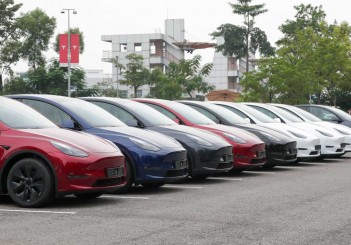BERLIN: A petrol-driven Volkswagen Beetle is an enduring classic, but it's not the most eco-friendly mode of transport - unless you convert it to 100-per-cent electric.
That's where Johannes Boddien comes in, an enthusiast and engineer from Germany who specialises in upgrading Beetles along with VW's chunky T1 and T2 camper vans.
His company trades under the name Voltimer - a play on Volkswagen and the German Anglicism "oldtimer," for a classic or cherished car.
Boddien starts off with a well-kept conventional Beetle - usually an import from South American countries where the mild climate has kept rust at bay. Pristine examples can cost more than 20,000 dollars.
Mechanics strip out the old motor and replace it with an electric power plant of a type usually used to power escalators before adding a rack of batteries.
The conversion takes around 100 man-hours, and the first five cars have been finished already, with three more in the pipeline. Three workshops convert the cars.
The Beetle was famous for its clattery power plant, which settled down to a loud whirr once warm. The electric version is as quiet as a mouse.
Performance was never a Beetle strongpoint either, but the 28kW motor in the electrified version is much more lively than the original, with improved acceleration thanks to the typical linear power delivery of electric motors.
The electric Beetle can top 150 km/h - around 30 km/h faster than a petrol-powered example - although this may be governed down in some countries, according to local regulations.
Voltimer buys the battery cells from an outside supplier or uses recycled ones from accident-damaged Tesla cars.
The electric Beetle costs 30,000 euros (RM141,000) in standard trim with a range of 70km, or 10,000 euros (RM47,000) more for the "Hobby" model, which can manage 200km between charges.
An electrified camper van or minibus costs 59,900 euros (RM281,000), rising to 75,000 euros (RM351,000) if ordered with a range of 400km.










